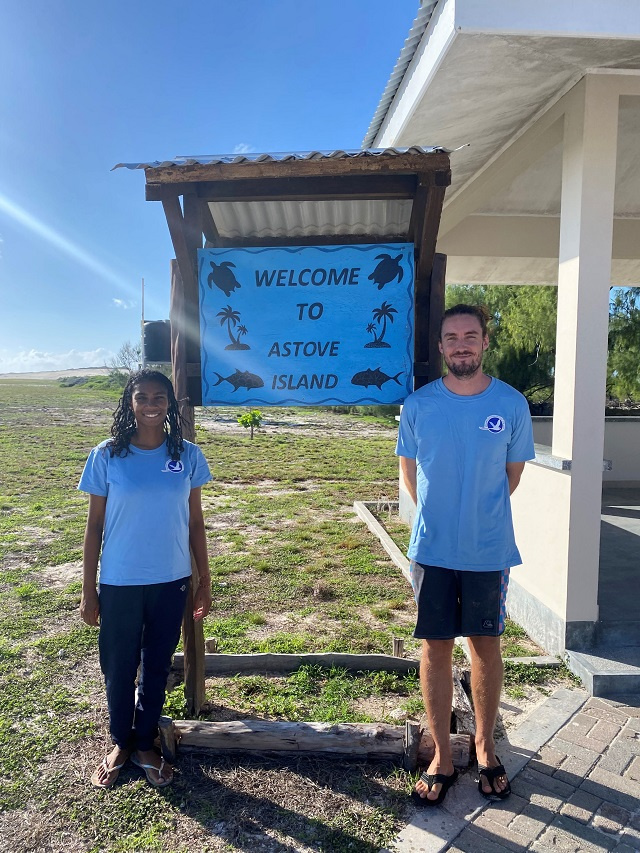Seychelles' Island Conservation Society opens conservation centre on Astove Atoll

The new centre is located on Astove Atoll located over 1,000km southwest. (Island Conservation Society)
The Island Conservation Society (ICS) - a non-profit organisation in Seychelles - has extended its conservation presence in the Aldabra group of islands with the opening of a new conservation centre on Astove, which the sixth one among others based on various islands in the archipelago.
In a press communique last week, ICS, which was set up in April 2000, said that the centre will also extend its work on the atoll of Cosmoledo where a sooty tern census is expected to be held later this month.
The new centre is located on Astove Atoll located over 1,000km southwest of the main island of Mahe. The atoll is part of the Aldabra Group, which also includes Assomption Island.
The ICS conservation officer on Astove, Jake Letori, said that opening the centre is easier said than done.
"The remoteness of the atolls with few transport options makes it logistically difficult and time-consuming to deliver equipment to the staff, especially in the southeast monsoon, making it challenging for the team," he explained.
ICS said that the opening of the new Astove Conservation Centre highlights the start of the long-term presence of ICS on the raised coral atolls which host exceptional marine and terrestrial flora and fauna. The atoll is the most important unprotected biodiversity hotspot in Seychelles, an archipelago in the western Indian Ocean.
The current main conservation priorities involve undertaking habitat assessments and removal of invasive alien species (IAS) such as cats. This will allow the reintroduction of land bird species from neighbouring Aldabra Atoll. The removal of invasive vegetation will also help to increase habitat sites for seabirds.
The new centre will also facilitate the annual sooty tern census on Cosmoledo, a task which will provide an updated estimate of the breeding population on the atoll. During the census, other seabirds will be monitored including the only breeding population of brown boobies in Seychelles, alongside red-footed boobies.
A small number of great frigatebirds and red-tailed tropicbirds also choose to nest on Cosmoledo and on rat and cat-free islands.
The director of conservation and science, Gregory Berke, said that although Astove and Cosmoledo do not fall under the same protection as Aldabra, ICS aims to conserve and monitor their unique wildlife populations and restore habitats to their natural state.
"This marks the beginning of a very long mission and while it may take some time before the centres are fully operational, it is a historic step in the right direction for conservation," he added.
Berke said that with so much to discover, a lot will be gained to benefit Seychelles and further global communities, and "throughout the journey, ICS will continue to share with you its progress and the extraordinary natural beauty that both atolls have to offer."
With the presence of ICS and the support of the Islands Development Company (IDC), which is a state-owned entity, and the tourism company Blue Safari Seychelles, it is hoped that illegal fishing activities which have been a cause of concern in the area will be reduced.
In the future, ICS is aiming to expand its programmes on Astove and Cosmoledo to include monitoring of marine biodiversity including sharks.





